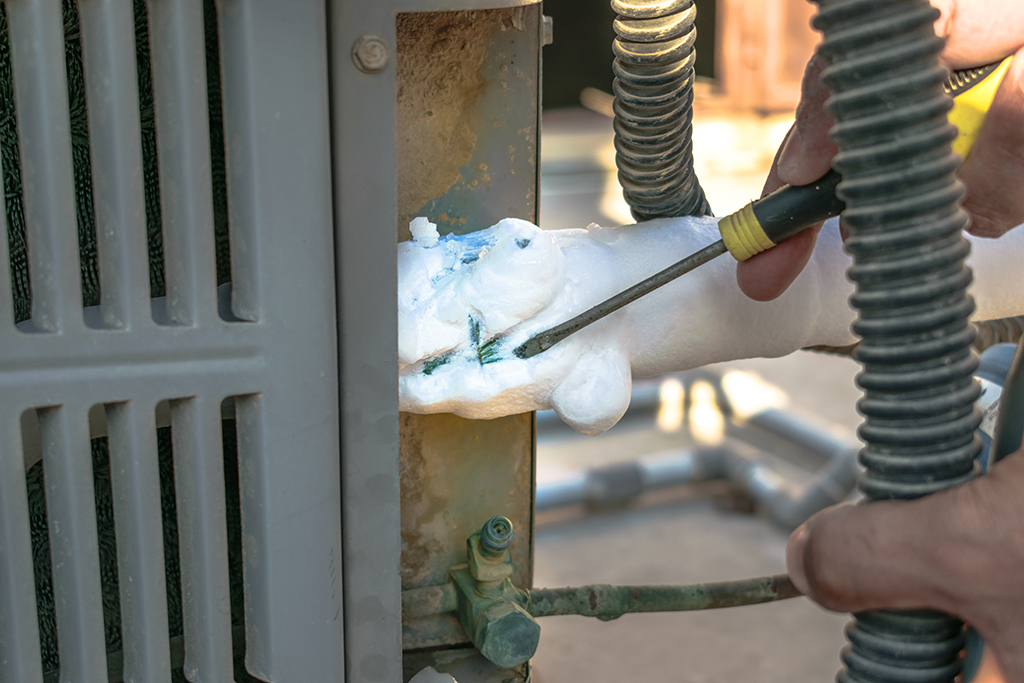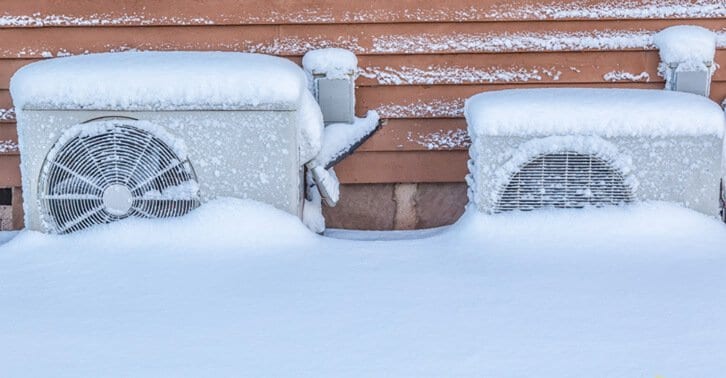Nearly everybody has got his or her own way of thinking on the subject of Have a Frozen AC Line? Here’s How to Fix It.

Intro
Uncovering that your a/c pipeline is frozen can be concerning, especially throughout hot summer season when you count on your air conditioning unit one of the most. Comprehending what to do in such a scenario is important to avoid further damage to your air conditioning system and ensure your convenience inside your home.
Understanding the Causes
Numerous elements can add to the freezing of an a/c pipe. Recognizing these causes can assist you resolve the problem properly.
Lack of Airflow
One usual cause of a frozen a/c pipeline is inadequate airflow. When the airflow over the evaporator coil is restricted, it can trigger the coil to drop below freezing temperature level, resulting in ice development on the pipeline.
Reduced Refrigerant Levels
Insufficient cooling agent degrees in your a/c system can also result in a frozen pipe. Low refrigerant levels can cause the stress in the system to go down, leading to the freezing of moisture on the evaporator coil.
Cold Weather Conditions
In chillier climates, freezing temperature levels outside can add to the cold of air conditioning pipes. If your a/c device is not effectively protected or if there are leaks in the ductwork, cool air can infiltrate the system, creating the pipe to ice up.
Dirty Air Filters
Dirty or blocked air filters can limit air movement in your AC system, causing numerous concerns, including a frozen pipe. It's vital to replace or cleanse your air filters frequently to make certain appropriate air flow and avoid ice build-up.
Signs of a Frozen A/c Pipe
Acknowledging the signs of a frozen air conditioning pipe is essential for prompt activity.
Lowered Airflow
If you discover a substantial decrease in air flow from your vents, it could indicate an icy pipeline.
Ice Buildup on the Pipe
Visible ice build-up on the refrigerant line or the evaporator coil is a clear indication of a frozen AC pipeline.
Strange Sounds from the Unit
Uncommon audios, such as hissing or bubbling, originating from your AC system can indicate that there's ice existing on the pipeline.
Immediate Actions to Take
When faced with a frozen air conditioning pipe, it's essential to act swiftly to avoid more damages to your cooling system.
Switching off the a/c
The first step is to shut off your ac system to stop the system from running and aggravating the concern.
Looking for Blockages
Check the location around the indoor unit for any kind of blockages that may be blocking air movement, such as furnishings or curtains.
Defrosting the Pipe
You can utilize gentle approaches like putting towels soaked in cozy water around the frozen pipeline to help thaw it gradually.
Preventive Measures
Taking safety nets can assist prevent future events of an icy a/c pipeline.
Routine Maintenance Checks
Arrange regular upkeep contact a professional HVAC professional to ensure that your air conditioning system is running effectively.
Transforming Air Filters
Frequently change or clean your air filters to prevent airflow restrictions and maintain optimal performance.
Protecting Exposed Pipes
If your air conditioning pipes are subjected to cold temperatures, take into consideration shielding them to avoid freezing during cold weather.
Looking For Professional Help
If DIY techniques stop working to solve the issue or if you're unclear concerning exactly how to proceed, it's best to look for support from a certified HVAC technician.
When DIY Methods Fail
If your attempts to thaw the pipe or address other concerns are unsuccessful, it's time to call in a specialist.
Significance of Hiring a Professional HVAC Technician
A qualified HVAC specialist has the competence and devices essential to identify and fix issues with your a/c system securely and effectively.
Conclusion
Taking care of an icy a/c pipeline can be an irritating experience, yet recognizing just how to respond can assist reduce damage and restore comfort to your home. By recognizing the causes, recognizing the indications, and taking prompt action, you can effectively address the concern and stop future incidents.
Frozen AC Line: Why It Happens & What To Do About It
A frozen AC line can be a rather peculiar sight in a place like Phoenix, Arizona where nothing ever freezes. In this post, we’ll discuss what makes an air conditioner line frozen – and what you can do about it.
Dirty Air Filters
Did you know that you should be cleaning or replacing your air filters on a monthly basis? Failing to do this can result in airflow issues that, in turn, cause your evaporator coils and lines to freeze over. You’ll notice a buildup of ice on both components, although the buildup on your pipes will, of course, be more evident unless you open your air condition up to reveal the coils.
What To Do About It
Give your air filter a good cleaning if it’s reusable. If not, replace the filter outright. Next, switch your air conditioner’s fan setting on and leave it there for 2-3 hours. This will draw warm air in, helping to thaw your evaporator coil. You can also check out this article for some tips on cleaning the coils themselves if you’d like to speed the process up. Before you switch the unit back to its normal state, make sure the supply vents are completely unobstructed and free of dust or other debris.
If you keep having this issue even after replacing your filters regularly, contact a local HVAC repair company and have them inspect your evaporator coil, ductwork, and any other components that may be at fault. If you live in the Phoenix, Arizona area, give American Home Water and Air a call.
Low Refrigerant Levels/Leakage
What To Do About It
Contrary to what air conditioner “recharge” companies often tell their clients about refrigerant, it should never need to be simply refilled. You see, refrigerant runs in what experts refer to as a “closed loop.” Refrigerant really shouldn’t be leaving that loop. If it is, you’ve got a leak.
Paying someone to come and pump more refrigerant into your system (aka “recharge” it) isn’t the solution. Doing that will simply kick the can down the road. Besides, refrigerant leaks can be harmful to the environment and people in your home.
Rather, you need to take care of the leak with the help of a technician. Check out this article for some more information about dealing with air conditioners that are leaking refrigerant. Before you contact a technician, switch your thermostat to the off position. Then, switch the fan setting on and let it run for 2-3 hours so the unit can thaw.
Improper Temperature Setting
Improper temperature settings can also cause a drop in your air conditioner’s pressure. What many people don’t realize is that air conditioners are actually designed to run when temperatures have fallen above roughly 60 degrees Fahrenheit. If you run the unit when it’s cold outside, you’ll run into many issues, including frozen components.

I stumbled upon that piece of writing about How can I fix an air conditioner’s frozen pipe? when doing a lookup on the web. Enjoyed our blog entry? Please share it. Let other people locate it. Thank-you for going through it.
Click Here
Comments on “Dealing With a Frozen AC Pipe - Advice for Resolving the Issue”